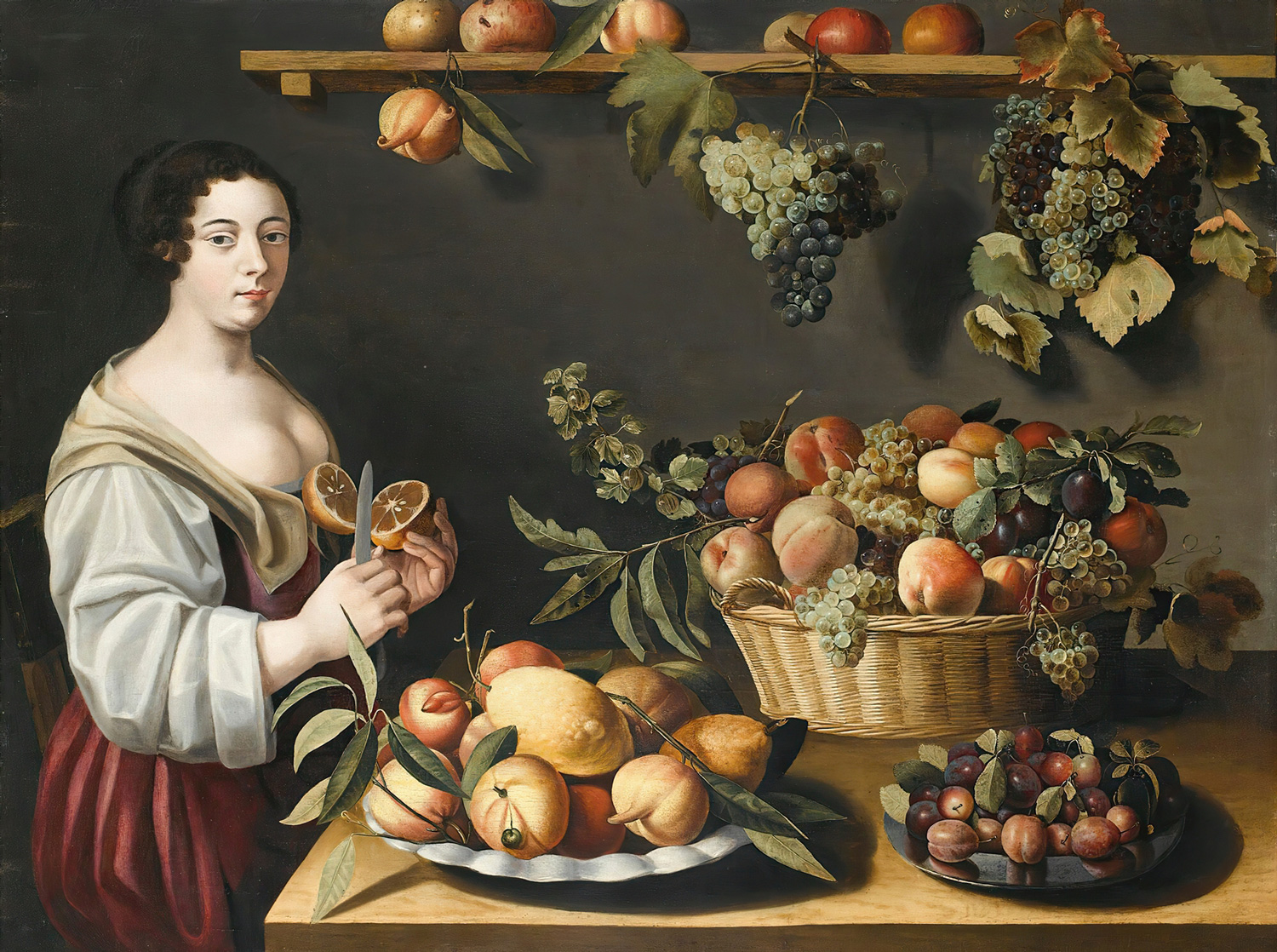Louise Moillon (French, 1600–1696)
Still Life with Bowl of Bitter Oranges and a Lemon, 1634
Oil on panel
The Norton Simon Foundation, F.1972.38.P
Beginning in the 15th century, sweet oranges were imported from southern China by Portuguese merchants. The link between China and all types of oranges persisted for centuries, despite the fruit’s eventual cultivation in European greenhouses. Here, Louise Moillon reinforces this relationship by placing oranges—in this case, bitter oranges native to the Mediterranean—in Chinese porcelain, which had become widely available through the Dutch East India Company’s aggressive entry into the Chinese export ware market. Moillon, who was celebrated for her attention to the surface qualities of fruit, chose porcelain as much for its luxury status as for its aesthetic value, contrasting blue-and-white patterns with vibrant, textured peels.
Moillon grew up in a family of artists and began painting at an early age. She was acclaimed for her work in the genre of still life, which was considered the most acceptable avenue for women artists, as it was perceived to require the same fine handwork necessary for embroidery. Moillon approached flowers, fruits and vegetables with both an artistic and a scientific eye. This painting, for instance, depicts a specific varietal of orange, Citrus aurantium var. corniculata, recognizable by its distinctive protrusions and leaf shape. It is possible that Moillon saw examples of this orange in person, as citrus was cultivated in Northern Europe at this time, or in a botanical treatise similar to Hesperides Norimbergenses by Johann Christoph Volckamer, which catalogues his collection of hothouse citrus plants (Figure 8). Volckamer includes an orange that closely resembles Moillon’s, which he identifies as an Oranzo cornuto (horned orange). Moillon repeated this composition of oranges and a lemon in her depiction of a fruit seller, which also incorporates elements from several other paintings, perhaps to draw parallels between the woman presenting her wares and Moillon’s offerings as an artist (Figure 9).

Figure 8: Johann Christoph Volckamer (German, 1644–1720), Aranzo Cornuto incanellato, in Hesperidum Norimbergensium (Nuremberg, 1713), p. 192b, The British Library, London. Image courtesy of the British Library
View ImageImage Credit:

Figure 9: Louise Moillon (French, 1610–1696), The Fruit Seller, 17th century. Oil on panel, 38 x 49 1/2 in. (96.5 x 125.5 cm), Private Collection
View ImageImage Credit: